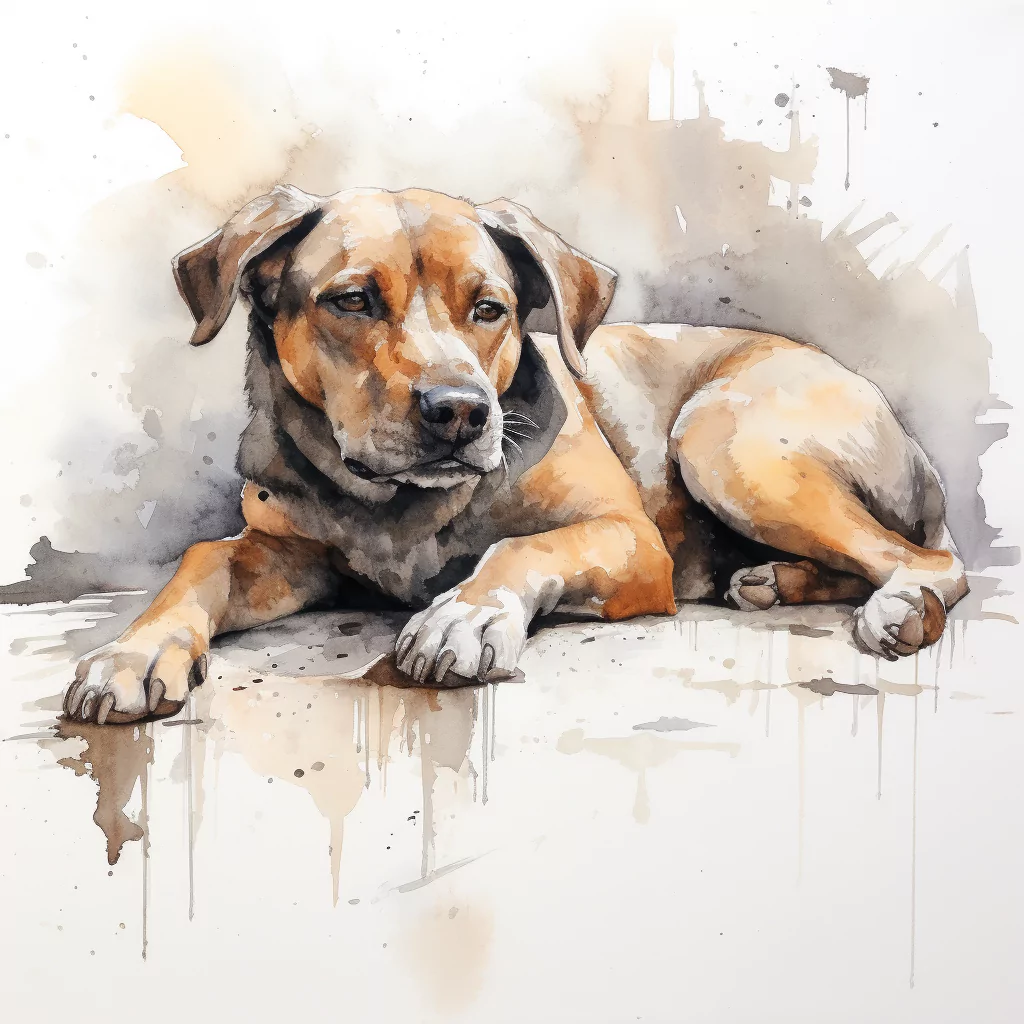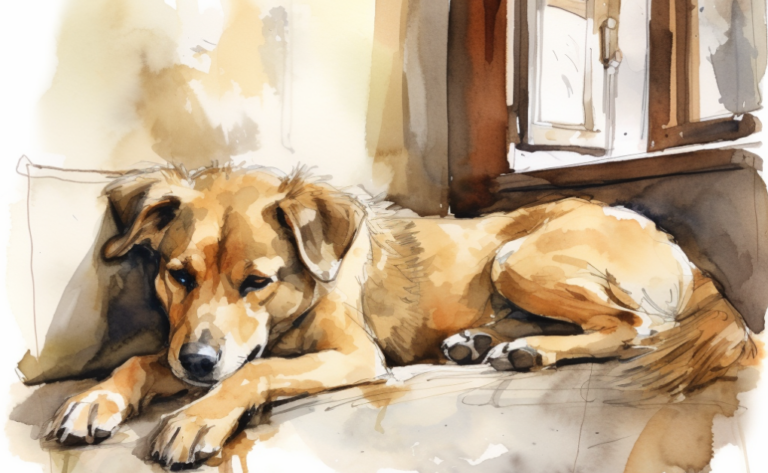Pneumothorax in Dogs: Causes, Symptoms, and Treatment Explained
What is it?
How is it Treated?
Breed Predispositions
Pekingese Yorkshire Terrier Pomeranian Chihuahua Shih Tzu Dachshund English Bulldog Boston Terrier
Introduction
One sunny afternoon, while playing fetch at the local dog park, Chris noticed his energetic Border Collie, Bella, suddenly gasping for air and struggling to breathe. Alarmed by his beloved pet’s sudden distress, Chris rushed Bella to the veterinarian for an urgent assessment. After a thorough examination, the vet diagnosed Bella with pneumothorax, a potentially life-threatening condition in which air accumulates in the chest cavity.
Pneumothorax in dogs is a medical condition characterized by air or gas within the pleural cavity, the space between the lungs and the chest wall. This accumulation of air in the chest cavity puts pressure on the lungs, causing them to collapse partially or entirely, leading to difficulty breathing and reduced oxygen supply to the body. Pneumothorax can be life-threatening if not treated promptly, as it impairs the dog’s respiratory function and can lead to respiratory failure or other complications. This condition is less common in cats.
Types of Pneumothorax in Dogs
Spontaneous Pneumothorax
Spontaneous pneumothorax occurs primarily without any apparent cause or underlying medical condition. Therefore, it can be further classified into two subcategories:
- Primary spontaneous pneumothorax: In this type, there is no identifiable cause for the accumulation of air in the pleural cavity. It is relatively rare in dogs and is thought to result from the spontaneous rupture of small air-filled sacs called blebs or bullae on the lung’s surface, sometimes referred to as the edges of the lung lobes.
- Secondary spontaneous pneumothorax: This type results from an underlying lung disease or condition that causes the lung to be more susceptible to air leakage into the pleural space. Secondary causes of spontaneous pneumothorax include chronic bronchitis, lung tumors, or lung abscesses.
Traumatic Pneumothorax
Traumatic pneumothorax in dogs is a critical condition involving air accumulation in the pleural space, negatively impacting lung function. This can lead to difficulty breathing and potential lung collapse. Ensuring your dog’s safety and avoiding situations that could result in injury can help reduce the risk of this life-threatening condition. In addition, regular check-ups and maintaining your dog’s overall health contribute to a better prognosis if such an incident occurs.
Iatrogenic Pneumothorax
Iatrogenic pneumothorax in dogs occurs due to medical procedures or interventions performed by a veterinarian or other medical professional. In these cases, the accumulation of air in the pleural cavity (the space between the lungs and the chest wall) is an unintended consequence of the procedure, leading to the partial or complete collapse of the affected lung, impaired breathing, and reduced oxygen supply to the body.
Tension Pneumothorax
Tension pneumothorax in dogs is a life-threatening condition where air accumulates in the pleural cavity (the space between the lungs and chest wall) without an escape route. This increases pressure within the chest, often causing pleuritic chest pain. As the pressure builds, it compresses the lungs and heart, impairing their function and resulting in severe respiratory distress and cardiovascular compromise.
Tension pneumothorax can occur as a complication of any other types of pneumothorax (traumatic, spontaneous, or iatrogenic) or as a result of a penetrating chest injury that creates a one-way valve effect, allowing air to enter the pleural cavity but not escape. Trapped air within the chest can lead to closed pneumothorax, while open pneumothorax occurs when the chest wall is damaged.
This condition requires immediate emergency treatment to remove the trapped air and relieve the pressure on the lungs and heart, restoring normal function and preventing potentially fatal consequences.
Causes of Pneumothorax in Dogs
Depending on the type of pneumothorax in dogs can be caused by various factors. Here is a list of some common causes:
Traumatic Pneumothorax
- Car accidents
- Falls from significant heights
- Bite wounds or puncture wounds (e.g., from another animal or a sharp object)
- Blunt force trauma to the chest, leading to a chest injury
Spontaneous Pneumothorax
- Lung diseases or infections (e.g., pneumonia, lung abscess) affecting lung health
- Lung tumors or cysts, which can be a common cause of spontaneous pneumothorax
- Congenital lung abnormalities, such as cystic fibrosis
- Rupture of lung bullae (air-filled sacs within the lung tissue) leading to air accumulation
Iatrogenic Pneumothorax
- Needle aspiration during thoracocentesis or lung biopsy, performed by a medical professional
- Surgical complications involving the chest or lungs
- Accidental puncture of the lung during placement of medical devices (e.g., chest tubes, central venous catheters)
Tension Pneumothorax
This type occurs when air accumulates in the pleural cavity without an escape route, leading to increased pressure and compression of the lungs and heart, causing a lung collapse. It can be caused by any of the factors mentioned above but is considered a medical emergency due to its rapid and severe impact on the dog’s cardiovascular and respiratory systems. In such cases, immediate treatment is crucial to prevent fatal consequences.
In some instances, small pneumothoraces may occur, and depending on their severity, they may or may not require intervention. However, prompt attention is needed to address the underlying issue in more severe cases of spontaneous pneumothorax. Pneumothorax is defined as air within the pleural cavity, and understanding its various causes is essential for proper diagnosis and treatment.
Symptoms of Pneumothorax in Dogs
The symptoms and clinical manifestations of pneumothorax found in dogs can differ based on the severity of the condition and the root cause. Here are some prevalent signs to be aware of:
- Rapid, shallow, or labored breathing (dyspnea)
- Increased respiratory rate (tachypnea)
- Coughing or gagging
- Sudden chest pain or chest tightness, especially when touched around the chest area
- Cyanosis (bluish discoloration of the gums or tongue, indicating lack of oxygen)
- Restlessness or anxiety
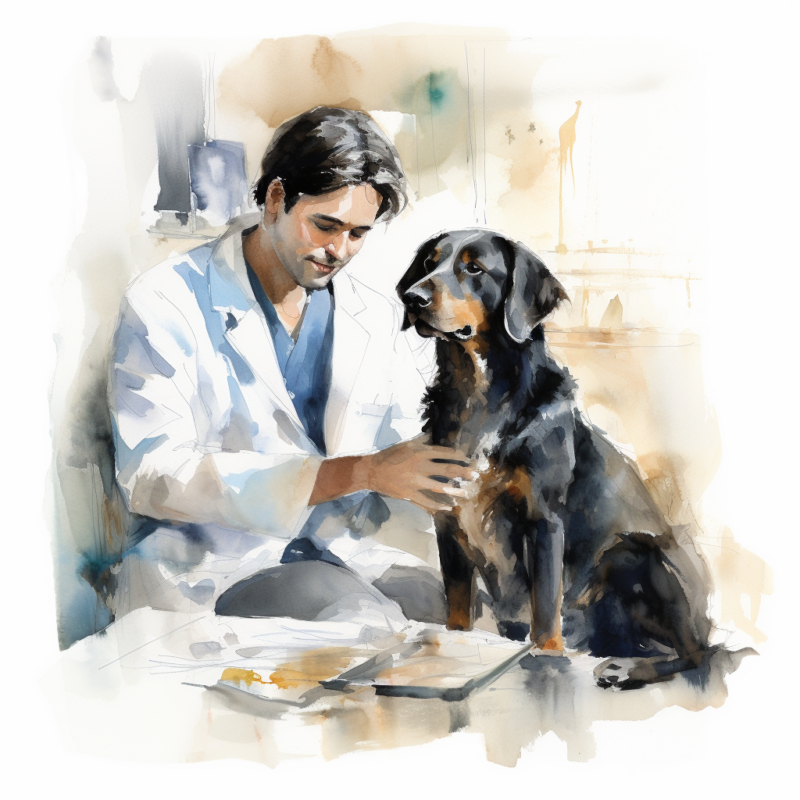
- Experiencing pain or discomfort, especially around the chest area
- Reduced exercise tolerance or the inability to exercise
- Increased heart rate (tachycardia)
- Weakness or lethargy
- Collapse or loss of consciousness
- Abnormal chest movement (e.g., one side of the chest moving differently than the other)
Due to the potential impact on air pressure within the chest cavity and the higher mortality rate associated with pneumothorax, it is crucial to seek immediate veterinary attention if you notice any of these symptoms in your dog. Pneumothorax can be a life-threatening emergency, particularly in large-breed dogs.
Diagnosis of Pneumothorax in Dogs
Diagnosing pneumothorax in dogs typically involves a combination of physical examination, medical history, and diagnostic imaging. Here are the steps a veterinarian or healthcare provider may take to diagnose pneumothorax in dogs:
- Physical examination: The vet will perform a thorough physical examination of the dog, paying close attention to the respiratory rate, heart rate, and lung sounds. In cases of pneumothorax, lung sounds may be diminished or absent on the affected side, depending on the location of the affected lung.
- Medical history: The veterinarian will ask questions about the dog’s recent activities, possible injuries, and any symptoms the dog has been exhibiting. This information can help the vet determine the possible underlying cause of the pneumothorax, as pneumothorax is often related to specific events or conditions.
- Radiography (X-rays): Chest X-rays are the primary diagnostic tool for detecting pneumothorax in dogs. An X-ray can reveal the presence of air in the pleural cavity, collapsed lung lobes, and any potential underlying causes, such as lung masses or rib fractures.
- Ultrasound: In some cases, a veterinarian may use thoracic ultrasound to visualize the pleural cavity and confirm the presence of air. Ultrasound can also help guide procedures such as thoracocentesis (removing air from the chest cavity) or placing a chest drain.
- Blood tests: Blood tests, including a complete blood count (CBC) and blood gas analysis, can help assess the dog’s overall health and evaluate the severity of the pneumothorax. These tests might reveal the need for extra oxygen or other supportive measures.
- CT scan: In some cases, a computed tomography (CT) scan may be necessary to provide more detailed information about the lungs and chest cavity, especially if there is suspicion of an underlying disease or injury that may not be visible on X-rays.
Once a diagnosis of pneumothorax is confirmed, the veterinarian will determine the appropriate treatment based on the severity of the condition and the underlying cause. Options may include medical management or more invasive procedures. It is worth noting that dogs with no concurrent lung issues and a spontaneous pneumothorax are approximately three times more likely to have a successful outcome. In contrast, persistent pneumothorax present may require further intervention.
Treatment Options for Pneumothorax in Dogs
The treatment of pneumothorax in dogs depends on the severity of the condition, the type of pneumothorax, and the underlying cause. Veterinarians will develop an individualized treatment plan to address these factors and ensure the best possible outcome for the patient. Here are some standard treatment options for different types of pneumothorax in dogs:
Emergency Stabilization
In severe cases where the dog struggles to breathe or shows signs of shock, the veterinarian will first focus on stabilizing the dog. This may involve providing oxygen therapy, administering intravenous fluids, or giving medications to support cardiovascular function. In cases of pneumothorax, where dogs are experiencing cardiovascular instability or shock, veterinarians may use a combination of drugs to support cardiovascular function. Some common medications include:
- Dopamine: This drug is a vasopressor and inotrope that helps to increase blood pressure and cardiac output by stimulating the heart and constricting blood vessels.
- Dobutamine: Another inotropic agent, dobutamine, increases cardiac output by enhancing the heart’s contractility without significantly affecting heart rate or blood pressure.
- Epinephrine (adrenaline): As a potent vasopressor and inotrope, epinephrine can increase blood pressure, heart rate, and cardiac output, which may be necessary in emergencies.
- Norepinephrine (noradrenaline): This medication is a powerful vasopressor that can help raise blood pressure by constricting blood vessels.
It’s important to note that these medications should be used under the supervision of a veterinarian, as they can have significant side effects and may not be appropriate for all dogs. The veterinarian will determine the most appropriate medication and dosage based on the dog’s specific condition and response to treatment.
Thoracocentesis
Thoracocentesis, or pleural tap or chest tap, is a medical procedure performed on dogs to remove air, fluid, or blood from the pleural cavity, which is the space surrounding the lungs. This procedure is often done to relieve respiratory distress and improve breathing in dogs suffering from pneumothorax, pleural effusion, or other conditions that cause a buildup of air or fluid in the chest cavity.
The procedure typically involves the following steps:
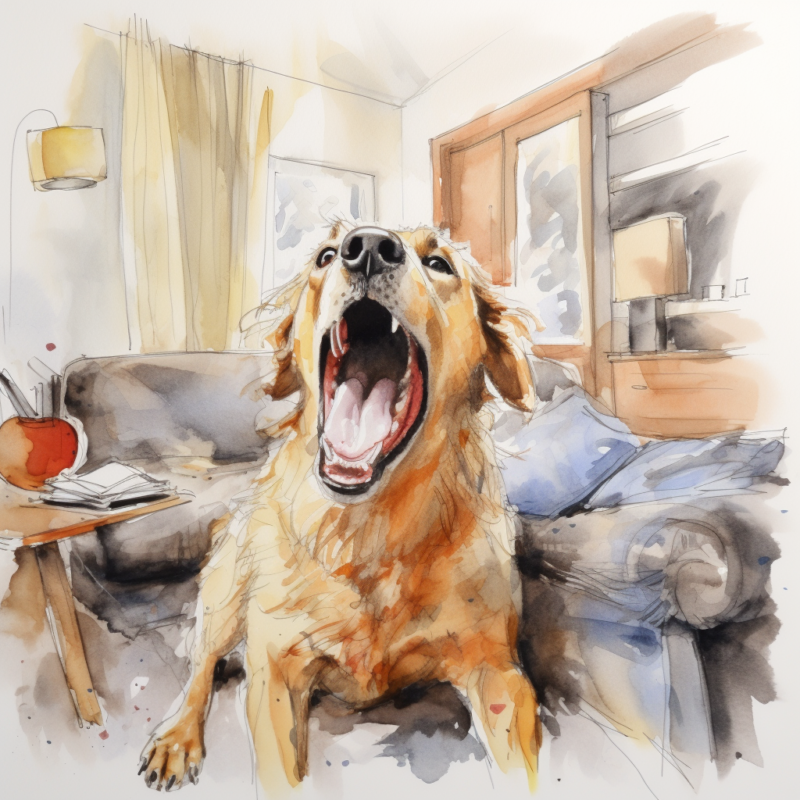
- Sedation or anesthesia: Depending on the dog’s condition, sedation or general anesthesia may ensure the dog remains calm and comfortable during the procedure.
- Positioning: The dog usually stands or lies with the affected side of the chest facing up. The area where the needle will be inserted is cleaned and disinfected.
- Needle insertion: The veterinarian will carefully insert a sterile needle or catheter through the skin and into the pleural cavity. The needle’s placement is often guided by ultrasound to ensure accurate positioning and to avoid injury to the lungs, heart, or blood vessels.
- Fluid or air removal: Once the needle is correctly positioned, the veterinarian will attach a syringe or a closed collection system to the needle and gently withdraw the excess air, fluid, or blood from the pleural cavity. This process may be repeated several times to remove as much air or fluid as possible.
- Assessment and monitoring: The dog’s breathing and overall condition will be closely monitored after the procedure. Sometimes, a follow-up thoracocentesis or chest radiograph may be needed to ensure the pneumothorax or pleural effusion has resolved.
Thoracocentesis is a relatively safe procedure, but it carries some risks, such as infection, bleeding, accidental lung injury or other nearby structures. However, when performed by an experienced veterinarian, these risks are typically low, and the benefits of relieving respiratory distress usually outweigh the potential complications.
Chest Tube Placement
Chest tube placement, also known as thoracostomy tube placement or chest drain insertion, is a veterinary procedure performed on dogs to manage various conditions that cause an accumulation of air, fluid, or blood in the pleural cavity. This procedure is commonly used to treat pneumothorax, pleural effusion, hemothorax, or pyothorax, where continuous or intermittent chest cavity drainage is required.
Thoracic Surgery
Surgery is a treatment option for pneumothorax in dogs when less invasive procedures like thoracocentesis or chest tube insertion do not effectively resolve the issue or when there is a clear, identifiable cause for the pneumothorax that requires surgical intervention. The severity of spontaneous pneumothorax dictates which treatment option is best. Surgery may be necessary in traumatic or iatrogenic pneumothorax cases, where lung injuries, penetrating chest wounds, or ruptured bullae cause air to leak into the pleural cavity.
The most common surgical interventions for pneumothorax in dogs include thoracotomy, lung lobectomy, bullaectomy, pleural abrasion, or pleurodesis. However, the chances of recurrent spontaneous Pneumothorax are 3% with surgical treatment and up to 50% with medical treatment.
The mortality rate with surgery varies, but successful treatment is more likely when surgery is performed. For example, the chances of recurrent spontaneous pneumothorax are 3% with surgical treatment and up to 50% with medical treatment alone.
The surgical procedure varies depending on the underlying cause of the pneumothorax and the dog’s overall health. The most common surgical interventions for pneumothorax in dogs include:
- Thoracotomy: A thoracotomy is a surgical procedure in which the veterinarian opens the chest cavity to gain direct access to the lungs and surrounding structures. During this procedure, the surgeon may repair or remove damaged lung tissue, close penetrating wounds, and address any underlying issues causing the pneumothorax. In addition, thoracotomy allows for a thorough examination of the pleural cavity and the ability to address multiple injuries or lesions if necessary.
- Lung lobectomy: In some cases, a lung lobectomy may be required to remove a damaged or diseased portion of the lung. This procedure involves the removal of the affected lung lobe(s) and can be done through a thoracotomy or minimally invasive techniques such as thoracoscopy.
- Bullaectomy: In dogs with spontaneous pneumothorax caused by ruptured lung bullae (air-filled sacs on the lung surface), a bullaectomy may be performed. This procedure involves the removal of the ruptured bulla and the surrounding lung tissue to prevent air leakage into the pleural cavity.
- Pleural abrasion or pleurodesis: To prevent recurrent pneumothorax, veterinarians may perform pleural abrasion or pleurodesis. These procedures create adhesions between the lung surface and the inner chest wall, reducing the pleural space and making it less likely for air to accumulate in the future.
Postoperative care is essential for a successful recovery after surgery for pneumothorax. The veterinarian will closely monitor the dog’s condition, provide pain relief, and administer antibiotics as needed to prevent infection. The dog’s activity will be restricted during recovery, and follow-up appointments will be scheduled to monitor the healing process and resolve the pneumothorax.
Surgery for pneumothorax carries some risks, including infection, bleeding, and potential complications from anesthesia. However, surgical intervention is necessary in many cases to effectively treat the underlying cause of pneumothorax and improve the dog’s quality of life.
Pain Management
Pain management is a crucial aspect of treating pneumothorax in dogs, as it helps ensure their comfort and reduce stress during recovery. The pain associated with pneumothorax can arise from various factors, such as chest trauma, pleural irritation, or the procedures and surgeries used to treat the condition.
Veterinarians use several methods and medications to manage pain in dogs with pneumothorax:
- Opioids: Opioids are potent pain-relieving medications often used in the initial stages of treatment for pneumothorax, mainly if the dog is in severe pain. Common opioids used in dogs include morphine, hydromorphone, fentanyl, and buprenorphine. These medications can be administered via injection, transdermal patches, or oral formulations, depending on the severity of the pain and the dog’s condition.
- Nonsteroidal Anti-inflammatory Drugs (NSAIDs): NSAIDs are commonly used to manage mild to moderate pain and inflammation in dogs. These medications, such as carprofen, meloxicam, or deracoxib, can be used alongside opioids or as a standalone treatment for pain management, depending on the dog’s pain level and overall health. However, it is essential to use NSAIDs under the guidance of a veterinarian, as they can have potential side effects, particularly long-term use.
- Local anesthetics: In some cases, local anesthetics like lidocaine or bupivacaine may numb the area around the chest or surgical site. These medications can be administered via injections, topical creams, or infusions, providing targeted pain relief at the source of the discomfort.
- Multimodal pain management: Different pain-relief medications and techniques are often employed to manage pain effectively. This approach, known as multimodal pain management, allows for lower doses of individual medicines, reducing the risk of side effects while providing comprehensive pain relief.
- Supportive care: Besides medications, supportive care is vital in managing pain in dogs with pneumothorax. This may include comfortable bedding, a quiet and calm environment, and gentle handling to minimize stress and discomfort during the recovery period.
Pain management is essential to the overall treatment plan for dogs with pneumothorax. By effectively managing pain, veterinarians can help ensure a more comfortable and smoother recovery process for the affected dog. Always consult with your veterinarian about the most appropriate pain management strategy for your dog, considering their specific needs and overall health.
Mechanical Ventilation
Mechanical ventilation is a treatment option for dogs with severe pneumothorax struggling to breathe independently. It involves using a machine called a ventilator to take over the dog’s breathing. The ventilator provides a steady oxygen flow and maintains consistent air pressure within the lungs, allowing the dog’s respiratory system to recover. This advanced intervention is typically performed in specialized veterinary facilities under the supervision of a veterinarian trained in critical care.
Recovery of Pneumothorax in Dogs
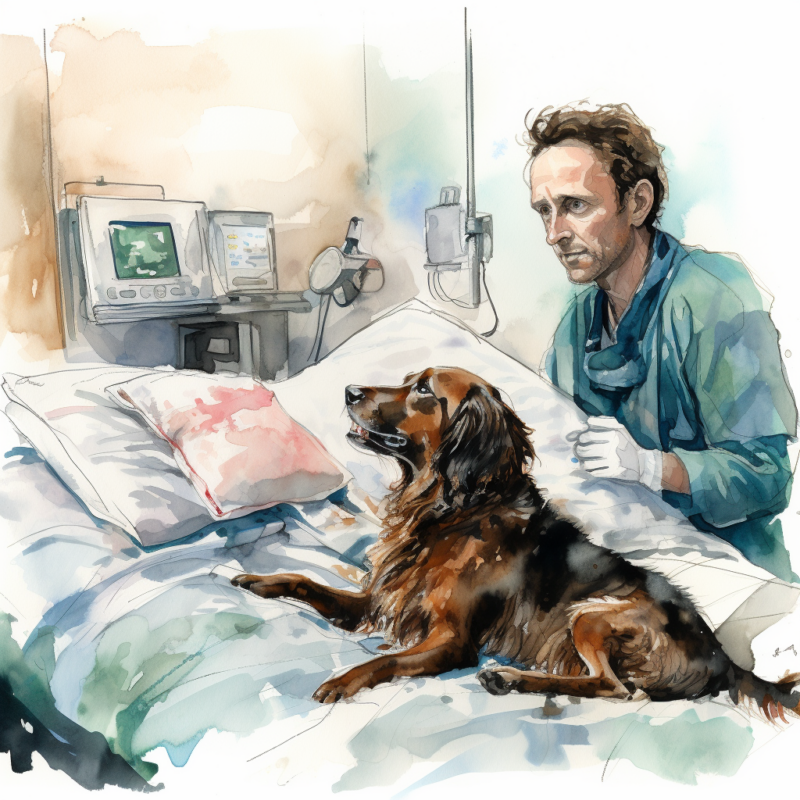
The recovery process for dogs with pneumothorax varies depending on the severity of the condition, the type of pneumothorax, and the treatment methods employed. The primary goal during recovery is to ensure that the dog’s breathing returns to normal, including the lungs’ inflation and the pneumothorax’s underlying cause is addressed, if possible. Here are some critical aspects of the recovery process:
- Monitoring: Following treatment for pneumothorax, it is crucial to closely monitor the dog’s breathing, heart rate, and overall health. This monitoring may be done at the veterinary hospital, mainly if the dog requires intensive care or surgery or at home under the guidance of your veterinarian.
- Follow-up visits: Regular follow-up appointments with the veterinarian are essential during recovery. These visits allow the vet to assess the dog’s progress, evaluate the effectiveness of treatment, and make any necessary adjustments to medications or care plans.
- Medications: Depending on the treatment and the underlying cause, dogs recovering from pneumothorax may require pain relievers, antibiotics, or anti-inflammatory drugs. Following your veterinarian’s recommendations and administering these medications as prescribed is essential.
- Activity restriction: Dogs recovering from pneumothorax may need to have their activity restricted, particularly if they have undergone surgery or experienced significant trauma. This restriction can help prevent complications and ensure the affected lung and chest cavity heal properly. Gradually reintroduce activity as your veterinarian recommends, and avoid strenuous exercise or play until the dog fully recovers.
- Nutritional support: A balanced and nutritious diet is essential during recovery. Some dogs may have reduced appetite due to pain or discomfort, so offering smaller, more frequent meals or using a calorie-dense prescription diet recommended by your veterinarian may be necessary.
- Emotional support: A calm and comfortable environment can help reduce stress and anxiety for dogs recovering from pneumothorax. Provide your dog with a quiet space, comfortable bedding, and plenty of emotional support to help ease their recovery.
The recovery time for dogs with pneumothorax can vary greatly, depending on the individual dog and the severity of the condition. Some dogs may recover within days, while others may require weeks or months of monitoring and care. However, following your veterinarian’s guidance and providing appropriate support can help your dog recover from pneumothorax and return to a healthy, active life.
Living and Management
Living and managing a dog with pneumothorax involves ongoing care, monitoring, and lifestyle adjustments to ensure their continued health and well-being. Here are some key aspects to consider when managing a dog with pneumothorax:
- Regular veterinary check-ups: Schedule routine check-ups with your veterinarian to monitor your dog’s condition and detect any changes or potential complications early. The frequency of these visits will depend on your dog’s specific situation and your veterinarian’s recommendations.
- Medication management: If your dog requires ongoing medication to manage pain, inflammation, or an underlying condition related to pneumothorax, it is essential to administer the medicine as prescribed and communicate any concerns or side effects to your veterinarian.
- Activity moderation: Dogs with a history of pneumothorax may need to moderate their activity levels to reduce the risk of recurrence or complications. Consult your veterinarian about appropriate exercise levels and avoid strenuous activities that could exacerbate the condition.
- Weight management: Maintaining a healthy weight is essential for dogs with pneumothorax, as excess weight can put additional strain on the respiratory system. Ensure your dog is fed a balanced and nutritious diet and monitor their weight regularly.
- Environmental considerations: Minimize your dog’s exposure to potential irritants or allergens, such as smoke, dust, or pollen, which could exacerbate respiratory issues. A clean and well-ventilated living environment can help support their respiratory health.
- Emotional support: Dogs with pneumothorax may experience anxiety or stress related to their condition or the necessary lifestyle changes. Providing a calm and supportive environment, offering reassurance, and using positive reinforcement can help reduce stress and promote their overall well-being.
- Monitoring for recurrence: Keep an eye on your dog’s breathing, energy levels, and general demeanor to detect any signs of recurrence or worsening of the pneumothorax. If you notice any concerning changes, consult your veterinarian immediately.
You can help ensure their continued health and quality of life by managing your dog’s pneumothorax. Remember to maintain open communication with your veterinarian and follow their guidance to provide the best care for your dog.
Frequently Asked Questions
Disclaimer: The information provided on this veterinary website is intended for general educational purposes only and should not be considered as a substitute for professional veterinary advice, diagnosis, or treatment. Always consult a licensed veterinarian for any concerns or questions regarding the health and well-being of your pet. This website does not claim to cover every possible situation or provide exhaustive knowledge on the subjects presented. The owners and contributors of this website are not responsible for any harm or loss that may result from the use or misuse of the information provided herein.

